Start Exploring Keyword Ideas
Use Serpstat to find the best keywords for your website
What Pages Attract the Most Traffic?

But which content is the best?
You have your choice of a variety of different types: infographics, e-books, videos, and regular blog content. Each one requires an investment of time and resources, so it's smart to pick one and run with it.
- Videos
- Infographics
- Ultimate Guides
- Product Reviews
- Lists (Listicle Posts)
- Case Studies
- Research and Data
- Long-Form Content
- Giveaways and Contests
- E-Books
- Interactive Content
Analyze Competitors' Best-Performing Pages with Serpstat
Conclusion
11 Types of Top Performing Content That Drives Traffic
A/B testing can go a long way to determining your ideal content, and if two types are complementary, you can even try mixing and matching to maximize your effectiveness.
A long-form blog, for instance, pairs well with a YouTube video on the same subject. By combining the two, you will appeal to both visual and textual learners.
Below are eleven of the most powerful forms of content that can drive traffic to your website.
#1 Videos

Which platform is right for you? That depends on the type of video that you plan on producing. Explainer videos are generally longer than 15 or 20 minutes, while cartoon and whiteboard videos are less than five.
You don't need to break the bank to shoot a video like this. Most modern smartphones have high-quality cameras, so the most you’ll have to buy is a microphone. If you decide to go the animation route, you can purchase software that will let you create videos in minutes. You can also use a free tool such as Picsart’s Youtube banner maker to make the most out of your YouTube channel and create an online identity and a brand.
Since file-sharing platforms frequently double as social media platforms, video can drive a ton of traffic to your website. This video about DCIM helps Nlyte explain a somewhat-complicated product, which will then send qualified traffic to their website from people who are already interested in it.
You may feel like creating a video accompaniment to a blog is a waste of time when truthfully, you’re reaching a whole new audience that prefers to watch content rather than read it.
At least half of the population (arguably more) classify themselves as visual learners, so if you rely on text-only for your content, you’ll be missing out on a massive sub-section of your audience.
#2 Infographics

The power of infographics is in their virality. Because they’re so concise and visually appealing, they can spread like wildfire, in the best case scenario generating dozens or even hundreds of natural backlinks in the process. Just make sure you brand your infographic in some way, so people know where it came from.
Unfortunately, most digital marketers are already turned on to the power of infographic marketing, so you’ll have to set yourself apart in some way. One way to accomplish this is by making an animated infographic. Create a video that demonstrates the flow of the infographic, then embed it on your page and on YouTube to drive extra traffic.
Interactive infographics work well too. Let the user scroll through the page to reveal information in the order that you want. Apple uses this tactic with great success on nearly all of their product pages, letting you see the stats and specs in the order that they want you to see them.
Infographics are all about telling a story; that’s what makes them different from a page with nothing more than a bar chart. Controlling the story will give you the opportunity to show them the points that you feel are most relevant to them, in the order that you think is necessary.
#3 Ultimate Guides
This guide that covers the FAFSA deadline — very important to incoming and current college students — is an example of a high-traffic guide. It also positions the writer (in this case, MOS) as a thought-leader in the industry since it’s such a well-referenced piece.
The length of a guide is also important. Since these pillar articles are longer than even the most epic of blog posts, they have the ability to include a ton of keywords that can drive steady SEO traffic for years to come (as long as the content is current). This travel nursing career guide, for example, is a great resource that can help future nurses plot their ideal path. At over 4,000 words, it has ample space for all the ranking signals that tell Google it’s here to stay.
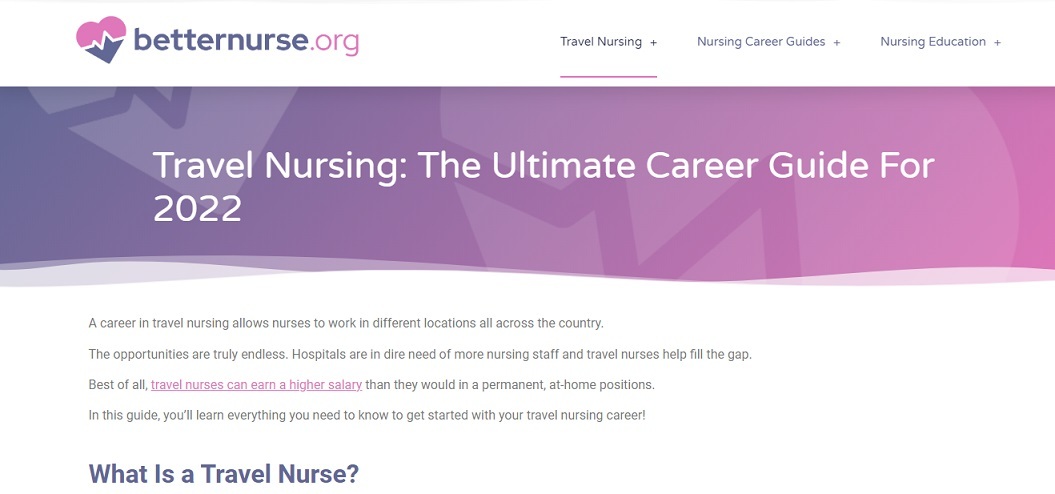
Guides aren’t created overnight. Unless you have a team of dedicated content producers on staff, you’ll have to hire a writer (or use some AI copywriting tool), editor, and designer in order to create a coherent, well-researched, and visually appealing guide. However, once you have that resource, it will pay for itself several times over.
#4 Product Reviews

Your best bet to rank for these types of keywords is to go after long-tail keywords. Instead of the “best Nike shoes” mentioned above, you could target the phrase “best Nike shoes for ultramarathon races in the cold.” That audience will be much smaller than the larger Nike audience, but will also be highly motivated, which means you’ll get qualified traffic to your page.
When writing your review, remember to go in-depth and answer questions that the community is already looking for. Keyword research obviously factors hugely in this process, but so does basic research like looking for the “suggested phrases” and “people also searched for” terms in Google. Use terms that people are looking for to flesh out your H2 and H3 tags, and also within the content. Check out this Serpstat on-page SEO guide for more on-page SEO tips.
If you’re searching for VPN services – such as “the best VPN for watching Netflix” – this review of NordVPN does a good job of presenting the information a searcher will need. It covers topics like bandwidth, pricing, server locations, and monitoring. The review also lists pros and cons, which is another great location to answer several keyword-rich frequently asked questions that Google showed in the SERPS.

Product reviews work so well because you’re leveraging the company brand to give your site legitimacy while also encouraging your audience to trust your honest review. You act as a go-between for two different entities and build credibility with both. In addition, you increase your site traffic and your profits too.
It’s a win for everyone.
#5 Lists (Listicle Posts)

Whatever the reason is, lists are huge traffic generators. They combine the authority of branded traffic (see product reviews above) while also allowing for enough space to inject a ton of keywords. Readers can also search for them very quickly, enabling them to find exactly what they’re looking for in a brief period of time.
This blog post on the best debit cards for kids is a great example of a keyword-rich, searchable list. When parents are trying to decide which cards to give their kids, they’ll specifically seek out lists like this that can give them a wide variety of options and the main bullet points they need to know for each card.
“Variety” is really the main idea when it comes to lists. Think of “ultimate lists” that give you 101 of the best types of dog shampoos or the 167 magazines you can sell short stories to. Readers crave this type of information because it gives them a lot of options to choose from. You’ve done the research for them; all they have to do is choose one to go with.
On the SEO side of thighs, the deeper the list, the harder it will be for others to outrank you. Your list will be longer and cover more ground than others, so someone will have to add to your list in order to beat you. That takes a lot of time, which means fewer people will be willing to try.
A good example is this list of best SEO tools from the Serpstat blog. It lists dozens upon dozens of tools and for someone to beat it, they'd need to come up with a significantly higher number, which would be very difficult. Not to mention that that post is long established in the SERPS and Google trusts it and also they trust Serpstat as the brand. It’d take ages to overcome such a page.
#6 Case Studies

And they’re incredibly addicting to read, as long as they focus on the story rather than the product or service itself. It’s a form of guerilla marketing that sells to people without their awareness, which also makes it a prime candidate for “going viral,” as well.
Case studies work great at any stage of the marketing funnel, but especially well in the middle or bottom stage. They’re not designed to introduce who you are as much as what your brand can do for someone.
For this reason, case studies don’t actually have to be that long. Whereas most forms of quality content need to be longer to keep eyeballs on the page, case studies can be a thousand words or less (depending on the situation). They’re highly branded, so you’ll receive traffic from that source, but they can also send referral traffic if you include them in an email automation sequence.
Ultimately though, case studies are all about the transformation of a company from point A to point B. The individual pain point is the starting block, the desired results are point B, and how your company helped them is the journey between those two points.
Don’t sugarcoat this process either; the more granular you can get with the details, the better. Be as specific as possible with the internal and external challenges a brand faces. Outline how the solution was implemented and what results were achieved.
With any luck, potential readers will see themselves in the story. It’ll serve as a “this could be you” moment for future clients, resulting in leads. Since it’s personal, though, it could also become a huge source of traffic as it gets shared time and time again.
#7 Research and Data

Why? Because it’s hard to get new data. Unless you have a programmer or market research team on staff, you’ll have to outsource this project to a third party that can gather data in a fair and objective manner. Then, you’ll need to find someone who can interpret those findings in a relevant and approachable way to your readers.
Once this data is compiled, it can become a traffic-generating machine for your website. Other sites will link back to your page (even skipping a linked page that they found it on initially), allowing you to gain a very dense backlink profile in the process.
Not every “research” page needs to be hard data. You can do stats pages too as they’re proven link magnets. For example, this content marketing statistics page is nothing more than a massive list of stats compiled from the web and many different sources. The author did their research and now they're getting valuable backlinks to that page in return.
The key in this process is to keep it relevant. Research has a shelf life, so you need to constantly revisit your pages to make sure they stay up-to-date.
#8 Long-Form Content
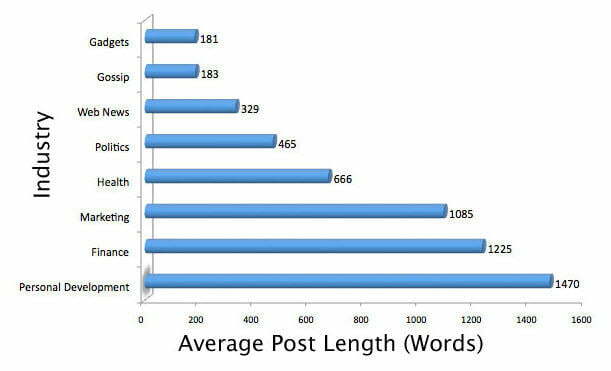
These days, it’s all about long-form content. Articles less than 1,000 words are out; anything greater than that – sometimes up to 10,000 words or more – is in. This length makes it longer than an average blog post but shorter than an e-book or even a guide.
Where long-form content shines is in delivering value to the reader and a metric ton of keywords that the search engine can index. For instance, a page on OCR invoice extraction may not seem like a highly optimized page, but the word “invoice” appears 40 times in this article alone. How’s that for keyword density?

If you don’t think you have the time to create long-form content, one easy shortcut is to take several related articles and combine them into one larger piece. You’ll have to restructure it to make it mesh well and possibly rewrite certain pieces, but it’s a great way to repurpose already-existing content in a flash.
Content rewriting and restructuring is a bit of an art and not everyone is adept at it. If that's you, then you can use an AI writing tool to help you quickly fill the gaps and build connective tissue between different blog posts.
I personally use either QuillBot or Jasper AI for this and it works pretty well for me, but there are many other AI writers on the market to pick from.
#9 Giveaways and Contests

Giveaways and contests work for SEO because they send a traffic spike and a message to the search engine that some kind of activity is taking place. A short traffic spike like what happens with a giveaway can be great for kickstarting a campaign and if you really want to maximize the SEO benefits, you should consider including giveaways into your SOP.
Normally called “loss leaders” or “lead magnets,” giveaways are a content type where you give something of value in exchange for an email address. Everything else remains the same; the greater the value of your giveaway or contest, the more traffic it will generate, and the more loyal your new audience will be.
Best of all, most companies normally don’t have to spend thousands of dollars creating something out of thin air. Many companies find success repurposing items they’re already giving away in some form.
ActiveCampaign is one such example. As an email service provider, they already offer a variety of templates for their customers to use. Sign up for their mailing list, though, and they’ll send you 100 email templates for free. Those can be invaluable for new entrepreneurs or even veterans looking to up their email game.
#10 E-Books

E-books are popular because they tell a story, whether that’s the story of a company or the story of “why.” Books that show the value of a particular worldview, approach, or concept can change an entire industry’s outlook, positioning you as an expert and generating huge brand loyalty in the process.
Depending on the type of book, you can leverage third-party sites that will send traffic to your site from those who pick up your book elsewhere. Amazon is the obvious choice, with millions of books available for download. It’s a very noisy marketplace, but it’s also the first place most people look.
For a more targeted audience, try sites like Scribd, where people can access your book (and others) by paying a small monthly fee. Be sure to include a powerful CTA at the end of the book so they can find their way back to your site. You can also leverage Amazon’s ACX system to create and upload your own audiobook to draw in additional traffic.
Online tools have made book creation easier than ever. Repurposing old content works fine, but if you’re serious about creating long-term, sustainable traffic, consider investing in a ghostwriter, editor, and cover designer to help you create your book. You may only create a few of these in your career, and since it represents your brand and over the long haul, the extra expense is worth it.
#11 Interactive Content
Not every form of interactive content is all about quizzes asking you which flavor of ice cream you are, though (forget about Buzzfeed and their silly, but viral quizzes).
Adjustable timelines, 360-degree video walkthroughs, and personality tests are examples of interactive content that provides a valuable service to the reader. Even videos and e-books count as interactive content to some brands.
Consider this net worth calculator, for instance. By inputting just a few pieces of relevant information, the reader has a number that may help them make important financial decisions. Instead of just telling them how to increase their net worth, Personal Capital gives them a tool to discover their starting point.

For example, fire up your Serpstat account and see how many links and referring domains CoSchedule’s Headline Analyzer tool has.
You’ll be blown away!
Finally, you’ll most likely get much higher engagement rates with interactive content than most other types of content on this list, precisely because it’s something that people refer back to. People will come back to calculators – like the one mentioned above – to re-evaluate their situation. Higher engagements mean multiple touchpoints, which increases your chances of turning a lead into a client.
Integrate Web Pages into Your Omnichannel Content Strategy
In order to create an omnichannel content strategy for your business, large or small, you need to consider how all of your platforms work in tandem. More importantly, it needs to be consistent across all your websites, social media, and email.
It’s up to you to decide how web pages will factor into your content strategy, but consider using pieces of it to create pivot points in the customer journey. An e-book landing page is usually a top-of-the-funnel touchpoint, whereas a guide can solve a certain issue that guides them to contact your business.
Remember to examine the data first. Find out what your audience is responding to, and create content that speaks to that instead of the other way around. By inserting the right webpage at the right time, you can connect the dots for potential customers looking for solutions.
Analyze Competitors' Best-Performing Pages with Serpstat
- get a list of your website's top pages to repeat the success;
- discover what competitor's pages drive the most traffic;
- borrow your competitor's ideas and make them even better;
- detect viral content that gets the most social media shares;
- collect relevant keywords with high search volume to boost your rankings, and more.
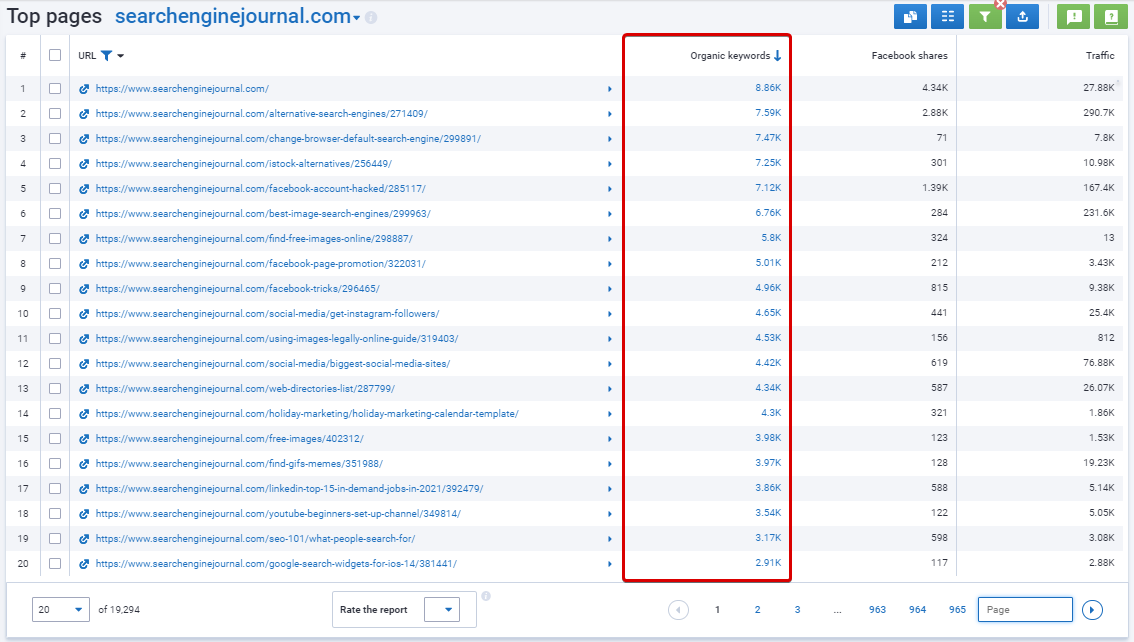
Clicking on the number of organic keywords will transfer you to a separate report, where you can see the full list of keywords a top-performing competitor's page ranks for, as well as plenty of useful metrics.
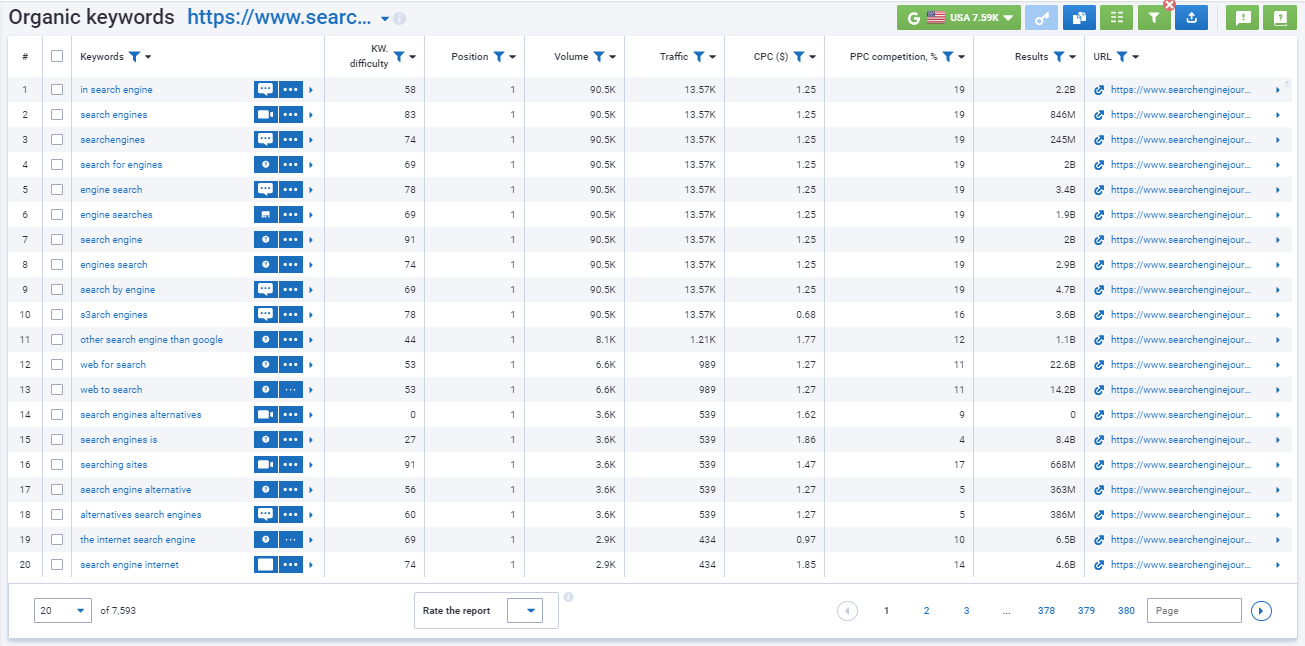
In this case, we're basing our analysis on the keyword of interest. In the following report, you will get a list of pages that rank for the highest number of keywords in organic search and drive the most traffic.
Go to the Keyword Research tool → SEO Research → Top Pages, type in the relevant keyword, and click "Search":
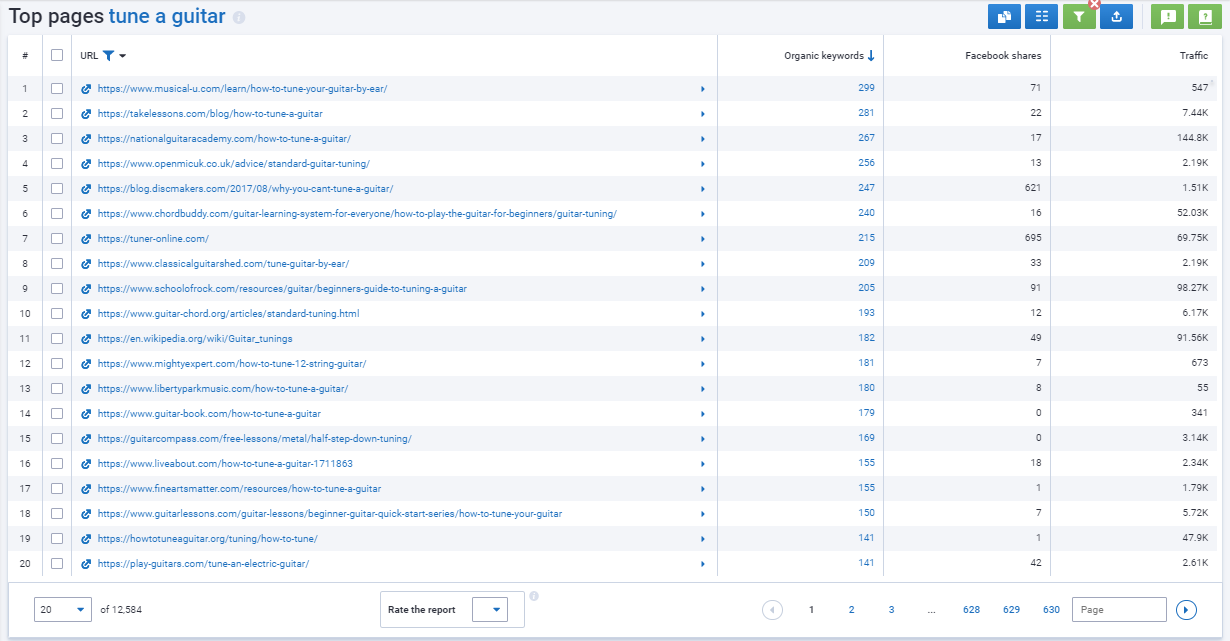
Conclusion
And as always, don’t be afraid to experiment. Test content forms for the same type of content; what doesn’t work as an e-book may explode as a series of long-form blog posts. It’s all about finding the right material that helps your customers achieve the transformation they desire.
Speed up your search marketing growth with Serpstat!
Keyword and backlink opportunities, competitors' online strategy, daily rankings and SEO-related issues.
A pack of tools for reducing your time on SEO tasks.
Discover More SEO Tools
Text Analysis Tool
Unlock the power of your text data with our advanced Text Analytics Tools
AI Content Detection
Ai Content Checker – realize if the text is AI-generated
AI Text Generator
Try our AI Content Writer tool and streamline your content creation process
AI Content Tools
AI Content Marketing Tools – simplify and optimize the content creation process
Recommended posts
Cases, life hacks, researches, and useful articles
Don’t you have time to follow the news? No worries! Our editor will choose articles that will definitely help you with your work. Join our cozy community :)
By clicking the button, you agree to our privacy policy.

